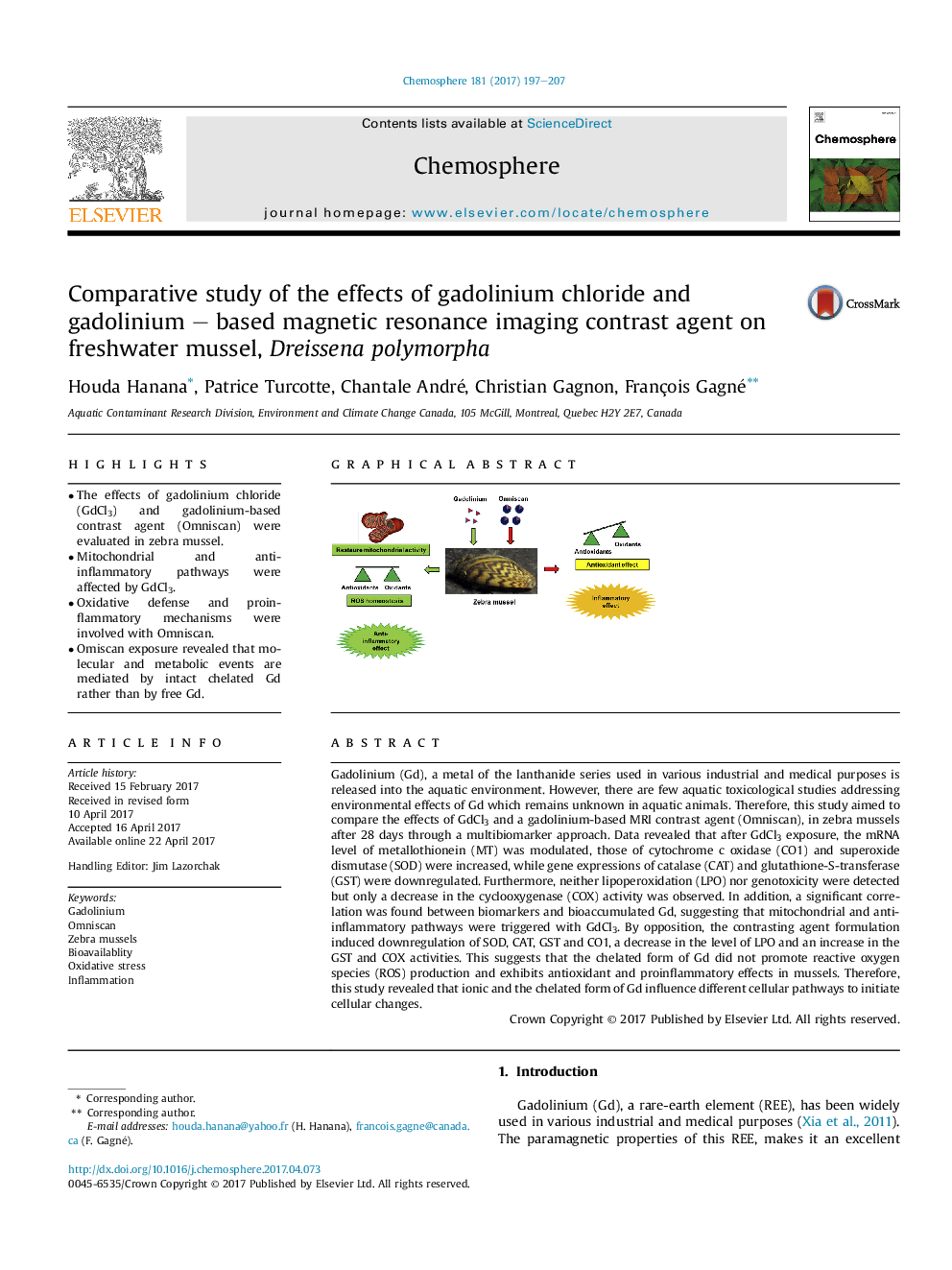| کد مقاله | کد نشریه | سال انتشار | مقاله انگلیسی | نسخه تمام متن |
|---|---|---|---|---|
| 5747164 | 1618790 | 2017 | 11 صفحه PDF | دانلود رایگان |

- The effects of gadolinium chloride (GdCl3) and gadolinium-based contrast agent (Omniscan) were evaluated in zebra mussel.
- Mitochondrial and anti-inflammatory pathways were affected by GdCl3.
- Oxidative defense and proinflammatory mechanisms were involved with Omniscan.
- Omiscan exposure revealed that molecular and metabolic events are mediated by intact chelated Gd rather than by free Gd.
Gadolinium (Gd), a metal of the lanthanide series used in various industrial and medical purposes is released into the aquatic environment. However, there are few aquatic toxicological studies addressing environmental effects of Gd which remains unknown in aquatic animals. Therefore, this study aimed to compare the effects of GdCl3 and a gadolinium-based MRI contrast agent (Omniscan), in zebra mussels after 28 days through a multibiomarker approach. Data revealed that after GdCl3 exposure, the mRNA level of metallothionein (MT) was modulated, those of cytochrome c oxidase (CO1) and superoxide dismutase (SOD) were increased, while gene expressions of catalase (CAT) and glutathione-S-transferase (GST) were downregulated. Furthermore, neither lipoperoxidation (LPO) nor genotoxicity were detected but only a decrease in the cyclooxygenase (COX) activity was observed. In addition, a significant correlation was found between biomarkers and bioaccumulated Gd, suggesting that mitochondrial and anti-inflammatory pathways were triggered with GdCl3. By opposition, the contrasting agent formulation induced downregulation of SOD, CAT, GST and CO1, a decrease in the level of LPO and an increase in the GST and COX activities. This suggests that the chelated form of Gd did not promote reactive oxygen species (ROS) production and exhibits antioxidant and proinflammatory effects in mussels. Therefore, this study revealed that ionic and the chelated form of Gd influence different cellular pathways to initiate cellular changes.
220
Journal: Chemosphere - Volume 181, August 2017, Pages 197-207